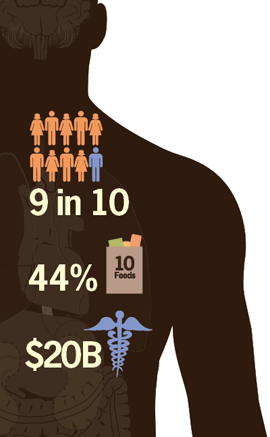HFCS vs. Sugar, and vice versa: eat less of both!
I’ve been trying to keep track of the legal dispute between the Corn Refiners (representing manufacturers of high fructose corn syrup—HFCS) and the Sugar Association, which represents growers of sugar beets and cane (sucrose).
Recall: HFCS is glucose and fructose separated, whereas sucrose is glucose and fructose stuck together. Because they are biochemically pretty much the same (enzymes that split sucrose act quickly), they have the same effects in the body.
So the dispute is about market share, not science.
First, the Corn Refiners tried to change the name of HFCS to “corn sugar.” The FDA turned this down (as well it should).
Then, the Sugar makers sued the Corn Refiners, claiming that the Corn Refiners’ public education marketing campaign was false and misleading because it promoted HFCS as “natural” (It’s not, in my opinion) and nutritionally and metabolically equivalent to other forms of sugar (which it is).
Then, the Corn Refiners countersued on the basis that Sugar lobbying groups are tricking the public into believing that sucrose is healthier than HFCS (it’s not) and trying to create a “health halo” for sucrose (absurd).
As Food Navigator puts it, the two associations are “trading insults.”
While all this is going on, a group called Citizens for Health has filed a petition with FDA to put the concentration of fructose in HFCS on package labels. HFCS is usually 42% or 55% fructose (it is 50% in sucrose). These forms of HFCS are considered by FDA to be generally recognized as safe (GRAS).
The petition argues that some products have more fructose—65% or 90%—and should say so.
All sugars should be consumed in small quantities, but fructose especially so.
The Corn Refiners say that Citizens for Health, which sponsors a website called foodidentitytheft.com, is funded by the Sugar Association.
Also in the meantime, a new study says HFCS has nothing whatsoever to do with obesity. Guess who sponsored the study.
Advice for today: eat less sugar(s), meaning sucrose, glucose, fructose, table sugar, HFCS, corn sugar, and all the other euphemisms food companies use to deflect attention from how much their products contain.


